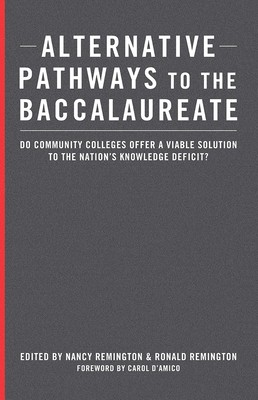
- We will send in 10–14 business days.
- Publisher: Stylus Publishing (VA)
- ISBN-10: 1579228755
- ISBN-13: 9781579228750
- Format: 15.2 x 22.6 x 1.8 cm, softcover
- Language: English
- SAVE -10% with code: EXTRA
Alternative Pathways to the Baccalaureate (e-book) (used book) | bookbook.eu
Reviews
Description
The community college, or applied, baccalaureate continues to be controversial although now approved by legislatures in eighteen states. Does it contribute to economic development and social mobility? Does it fill a major gap in our educational system?
Opening with a brief historical account of the community college baccalaureate movement, this book then situates the baccalaureate in the context of demographic trends and workforce needs; addresses concerns about "mission creep" and the impact on four-year colleges; offers insights into the political arguments arrayed for and against wider adoption; and looks at the implications for accreditation.
The contributors review the capacities of four-year colleges to deliver training for technical occupations; the ability of community colleges to deliver rigorous, high-quality courses; and consider issues of access, affordability, faculty development, and responsiveness to changing needs. A chapter devoted to student voices provides the critical perspective of this constituency.
The book concludes by describing examples of implementation across the U.S., reviewing different models of articulation, as well as promising practices that include eliminating the need for transfer altogether.
Published in association with the Community College Baccalaureate Association
EXTRA 10 % discount with code: EXTRA
The promotion ends in 18d.00:54:04
The discount code is valid when purchasing from 10 €. Discounts do not stack.
- Publisher: Stylus Publishing (VA)
- ISBN-10: 1579228755
- ISBN-13: 9781579228750
- Format: 15.2 x 22.6 x 1.8 cm, softcover
- Language: English English
The community college, or applied, baccalaureate continues to be controversial although now approved by legislatures in eighteen states. Does it contribute to economic development and social mobility? Does it fill a major gap in our educational system?
Opening with a brief historical account of the community college baccalaureate movement, this book then situates the baccalaureate in the context of demographic trends and workforce needs; addresses concerns about "mission creep" and the impact on four-year colleges; offers insights into the political arguments arrayed for and against wider adoption; and looks at the implications for accreditation.
The contributors review the capacities of four-year colleges to deliver training for technical occupations; the ability of community colleges to deliver rigorous, high-quality courses; and consider issues of access, affordability, faculty development, and responsiveness to changing needs. A chapter devoted to student voices provides the critical perspective of this constituency.
The book concludes by describing examples of implementation across the U.S., reviewing different models of articulation, as well as promising practices that include eliminating the need for transfer altogether.
Published in association with the Community College Baccalaureate Association


Reviews